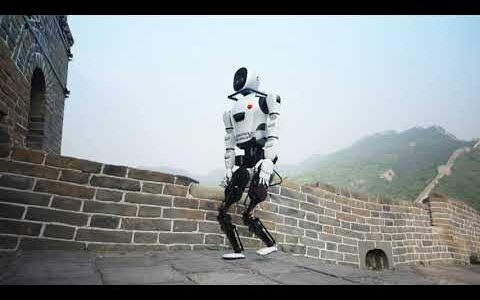Robot videos as a genre can be pretty impressive. Who can forget the Boston Dynamic dance moves, the teleoperate and sped up humanoid robots pretending to be able to do household chores, or the DARPA compilation of robots falling down?
This one is quite special even in the highly competitive landscape of robot videos. XBot-L , a humanoid robot from Robot Era, strolled convincingly along the Great Wall in a video that’s part travelogue and part adventure — with a dash of Tai Chi demonstration.
Terrain troubles
Uneven terrain poses a number of challenges for robots, especially those with wheels or traditional walking mechanisms. There Great Wall presents a wide range of difficult walking surfaces, including long flights of steps, broken stones, and uneven pathways.
Changes in elevation, bumps, and holes can disrupt a robot’s balance. Wheeled robots might lose traction or tip over, while legged robots might struggle to maintain stable footing or trip over obstacles. As robots navigate uneven terrain, their weight distribution constantly changes. This can be difficult for robots to manage, affecting their control and stability.
Loose sand and gravelcan be challenging for robots to navigate. Wheels can get stuck, and legged robots might lose their grip. Robots with less flexibility or dexterity might struggle to adapt their movements to navigate complex uneven terrain. They might not be able to step over obstacles or climb over uneven surfaces.
Limited perception
Sensors on robots might not accurately perceive the full complexity of uneven terrain. This can lead to miscalculations and navigation errors. For example, shadows or changes in lighting can be misinterpreted by some sensors. Dusty or dirty environments can affect the performance of some robot sensors. This can make it difficult for robots to accurately assess the terrain and plan their movements.
XBot-L was able to traverse dark passages with no trouble. It has advanced perceptual training that allows it to respond and adjust to changes in its environment.
Real-world use
We tend to shake our heads over robot videos because hey may be cool — this one certainly is — but they’re not that practical. Do you need your robots to be able to climb the Great Wall? Not really. But we can see the usefulness in this case, for sure. For search and rescue capabilities, control over challenging terrain tends to be the greatest obstacle to effective use of robots…and sometimes for human workers, too.
We will watch XBot-L with interest.



